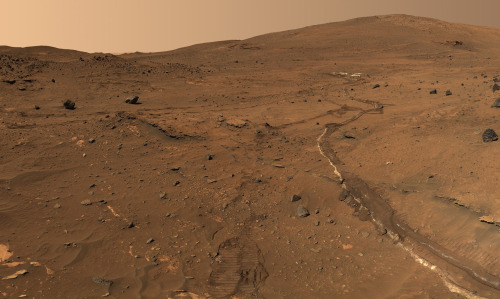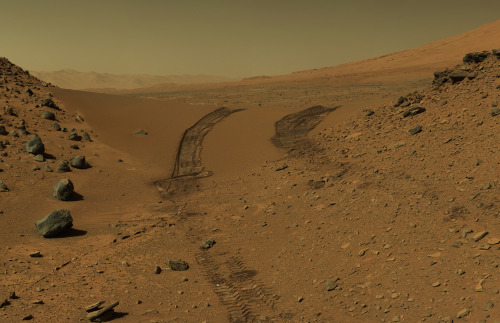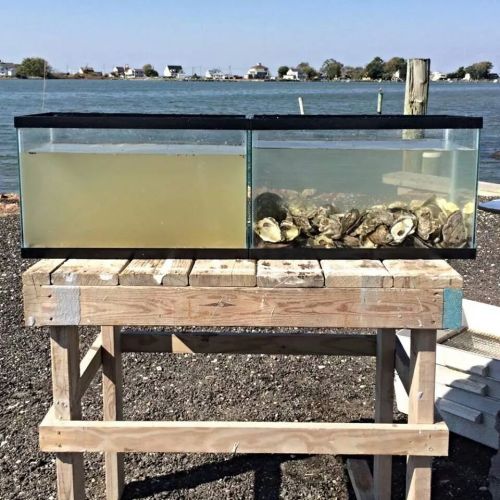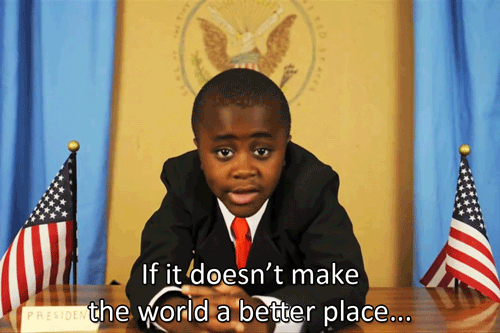From Hawaii’s Flurry Of Hurricanes, To Record High Sea Ice In Antarctica, And A Heat Wave That Cooked

From Hawaii’s flurry of hurricanes, to record high sea ice in Antarctica, and a heat wave that cooked the Australian Open like shrimp on a barbie, 2014 saw some wild weather. How much of that was tied to climate change is what scientists around the world tried to answer in the Bulletin of the American Meteorological Society’s annual attribution report, which was published Thursday.
What they discovered was that the clearest impacts of warming could be found in heat-related events, from heat waves on land to unusually hot ocean waters. Other events, like droughts in East Africa and the Middle East, California’s intense wildfires, and winter storms that continually swept across the eastern U.S., were harder to pinpoint. In part this is because such events are inherently complex, with a multitude of factors influencing them.
For example, while the East African drought was found to be both more likely and more intense because of warming, the situation in the Middle East was less clear, with no discernable climate change connection to the various factors that influenced it. Likewise, no direct push from climate change could be found in California’s wildfire activity, though it is clear that it is increasing the overall wildfire risk there.
And while some events, like the U.S. winter storms and the record high Antarctic sea ice extent, could be pinned to a particular cause, that cause could not be linked to climate change. For other events, like the drought in Brazil and flooding in the Canadian prairies, humans influenced the likelihood in other ways besides the greenhouse gases that continue to be emitted into the atmosphere.
What was clear, though, is that the fast-growing field of what is called extreme event attribution is gaining momentum. Researchers are casting a wider net for extreme events to examine and continually refining their methods. Attribution work has traveled a considerable distance since its inception just over a decade ago.
“Extreme event attribution” is a new topic for me. Very cool science right thar.
More Posts from Dotmpotter and Others




We actually have pictures that great of Mars, a planet about 225 million kilometers (140 million miles) away from us. Image copyright: NASA

Mapping the World’s Air Pollution in Real Time
[Image: Air Quality Index China]
Walmart heirs' net worth exceeds that of population of a city the size of Phoenix #1yrago

It’s grown 6,700% since 1983, to $144.7B in 2013 – greater than the net worth of 1,782,020 average Americans.
Read the rest

Both were filled at the same time with the same water, only one had oysters.

An estimated 30 trillion cells in your body—less than a third—are human. The other 70-90% are bacterial and fungal!
Learn more in the new exhibition, The Secret World Inside You, now open!
Image: Gaby D'Allesandro / © AMNH
How To Make Solar Cells Without Toxic Materials

Researchers find non-toxic way to make thin film solar cells…
Follow me on Twitter and Google+.
Image: “A surfactant template guides the self-assembly of functional polymer structures in an aqueous solution” by Youngkyu Han and Renee Manning, via Oak Ridge National Laboratory.
AIDS-drug-gouging hedge-douche reneges on promise to cut prices for Daraprim

Martin Shkreli, the hedge-fund douche-bro who hiked the price of an off-patent drug used by AIDS and cancer patients from $13.50 to $750, then promised to lower the prices after becoming the Most Hated Man on the Internet did no such thing, because he is a liar.
http://boingboing.net/2015/11/25/aids-drug-gouging-hedge-douche.html

Could Europe Be Powered by African Solar Energy?
For a long time, people looking for big fixes to climate change have been talking about building huge solar installations in North Africa, which gets a lot more sun than most of the places where solar power is big — Germany, for example. But now, it looks as if someone finally is doing it.
Next month in Ouarzazate, Morocco, the first portion of what eventually will be the world’s biggest concentrated solar power plant – called Noor I – is set to go online, according to the Guardian, a British newspaper.
Eventually, when the entire $10 billion complex, which is being financed with assistance from the World Bank and European Union, is completed in 2020, it will generate 580 megawatts of electricity, enough to provide a big portion of Morocco’s energy needs while still leaving plenty of juice for export. The complex could prevent 700,000 tons of carbon dioxide from being spewed into the atmosphere each year.
The plant uses an ingenious technology for getting the most out of sunlight. A huge array of 500,000 crescent-shaped mirrors focus sunlight and transmit it to a single point on a tower. (The mirrors actually have tiny computers in them, which adjust the angle throughout the day to gather the most energy.)
The plant could turn Morocco, which depends upon fossil fuel imports to fill 94 percent of its energy needs, into a major producer of electricity for export. Find out how by clicking here.


#Chocoholic: We sure love our chocolate, but it'd be a lot sweeter if it wasn't coming from child labor.

WATCH the short video here.
+2 million children work in cocoa production in Ghana and the Ivory Coast. This year, Nestlé, Mars Bar, and HERSHEY'S were sued for knowingly partnering with suppliers that use child workers.
DEMAND that these chocolate companies become Made In A Free World here: madeinafreeworld.com/action!
-
 shootsbrand liked this · 8 years ago
shootsbrand liked this · 8 years ago -
 dragoninhumanskin liked this · 8 years ago
dragoninhumanskin liked this · 8 years ago -
 climatecentraldotorg reblogged this · 9 years ago
climatecentraldotorg reblogged this · 9 years ago -
 guidancegreen reblogged this · 9 years ago
guidancegreen reblogged this · 9 years ago -
 desireedevine liked this · 9 years ago
desireedevine liked this · 9 years ago -
 the-humanfactor reblogged this · 9 years ago
the-humanfactor reblogged this · 9 years ago -
 ladyifrit reblogged this · 9 years ago
ladyifrit reblogged this · 9 years ago -
 choppye reblogged this · 9 years ago
choppye reblogged this · 9 years ago -
 climate-changing liked this · 9 years ago
climate-changing liked this · 9 years ago -
 education210-blog reblogged this · 9 years ago
education210-blog reblogged this · 9 years ago -
 survivor-surviving reblogged this · 9 years ago
survivor-surviving reblogged this · 9 years ago -
 mythicalminds liked this · 9 years ago
mythicalminds liked this · 9 years ago -
 dotmpotter reblogged this · 9 years ago
dotmpotter reblogged this · 9 years ago -
 realcleverscience liked this · 9 years ago
realcleverscience liked this · 9 years ago -
 dendroica liked this · 9 years ago
dendroica liked this · 9 years ago -
 thecyberleader-2025 liked this · 9 years ago
thecyberleader-2025 liked this · 9 years ago -
 xperfectxbooms reblogged this · 9 years ago
xperfectxbooms reblogged this · 9 years ago -
 xperfectxbooms liked this · 9 years ago
xperfectxbooms liked this · 9 years ago -
 soupybull reblogged this · 9 years ago
soupybull reblogged this · 9 years ago -
 megacosms reblogged this · 9 years ago
megacosms reblogged this · 9 years ago -
 scootyaboot liked this · 9 years ago
scootyaboot liked this · 9 years ago -
 scootyaboot reblogged this · 9 years ago
scootyaboot reblogged this · 9 years ago -
 buff-chickpea liked this · 9 years ago
buff-chickpea liked this · 9 years ago -
 eyescreamyouscream liked this · 9 years ago
eyescreamyouscream liked this · 9 years ago -
 emergentfutures reblogged this · 9 years ago
emergentfutures reblogged this · 9 years ago -
 mareeonline reblogged this · 9 years ago
mareeonline reblogged this · 9 years ago -
 mareeonline liked this · 9 years ago
mareeonline liked this · 9 years ago -
 mariahoenenevigglad reblogged this · 9 years ago
mariahoenenevigglad reblogged this · 9 years ago -
 terrorizespeed liked this · 9 years ago
terrorizespeed liked this · 9 years ago -
 hamster-run-faster reblogged this · 9 years ago
hamster-run-faster reblogged this · 9 years ago -
 hamster-run-faster liked this · 9 years ago
hamster-run-faster liked this · 9 years ago -
 ihasquestions reblogged this · 9 years ago
ihasquestions reblogged this · 9 years ago -
 article-reblogs reblogged this · 9 years ago
article-reblogs reblogged this · 9 years ago -
 cupofwisdom liked this · 9 years ago
cupofwisdom liked this · 9 years ago -
 cesand1 liked this · 9 years ago
cesand1 liked this · 9 years ago -
 otpblackholemagnetar reblogged this · 9 years ago
otpblackholemagnetar reblogged this · 9 years ago